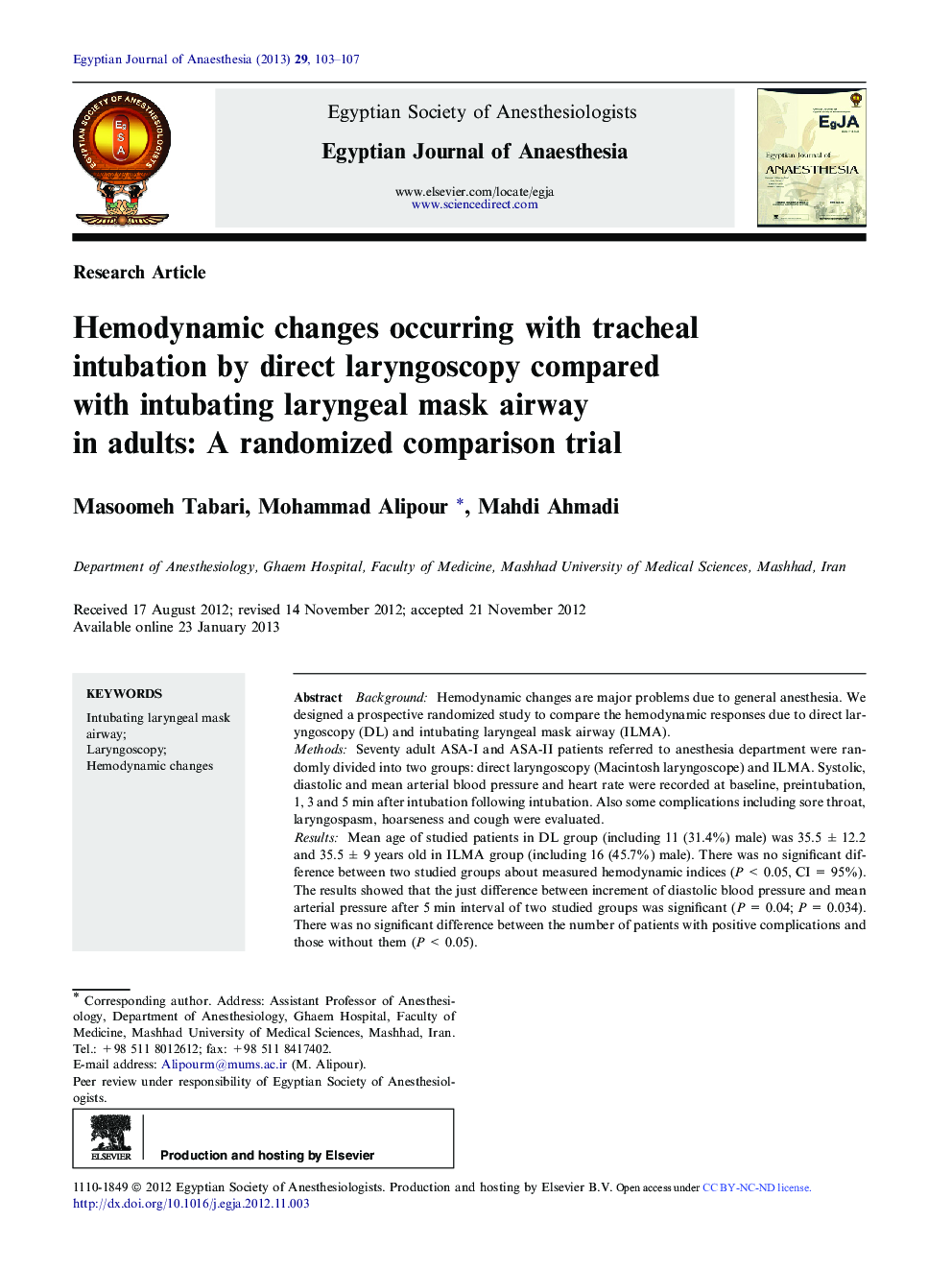| Article ID | Journal | Published Year | Pages | File Type |
|---|---|---|---|---|
| 2756460 | Egyptian Journal of Anaesthesia | 2013 | 5 Pages |
BackgroundHemodynamic changes are major problems due to general anesthesia. We designed a prospective randomized study to compare the hemodynamic responses due to direct laryngoscopy (DL) and intubating laryngeal mask airway (ILMA).MethodsSeventy adult ASA-I and ASA-II patients referred to anesthesia department were randomly divided into two groups: direct laryngoscopy (Macintosh laryngoscope) and ILMA. Systolic, diastolic and mean arterial blood pressure and heart rate were recorded at baseline, preintubation, 1, 3 and 5 min after intubation following intubation. Also some complications including sore throat, laryngospasm, hoarseness and cough were evaluated.ResultsMean age of studied patients in DL group (including 11 (31.4%) male) was 35.5 ± 12.2 and 35.5 ± 9 years old in ILMA group (including 16 (45.7%) male). There was no significant difference between two studied groups about measured hemodynamic indices (P < 0.05, CI = 95%). The results showed that the just difference between increment of diastolic blood pressure and mean arterial pressure after 5 min interval of two studied groups was significant (P = 0.04; P = 0.034). There was no significant difference between the number of patients with positive complications and those without them (P < 0.05).ConclusionLaryngoscoy through the intubating laryngeal mask airway was associated with lesser mean arterial pressure and diastolic blood pressure when compared to intubation by direct laryngoscope. Thus this technique seems to reduce hemodynamic response to tracheal intubation.
